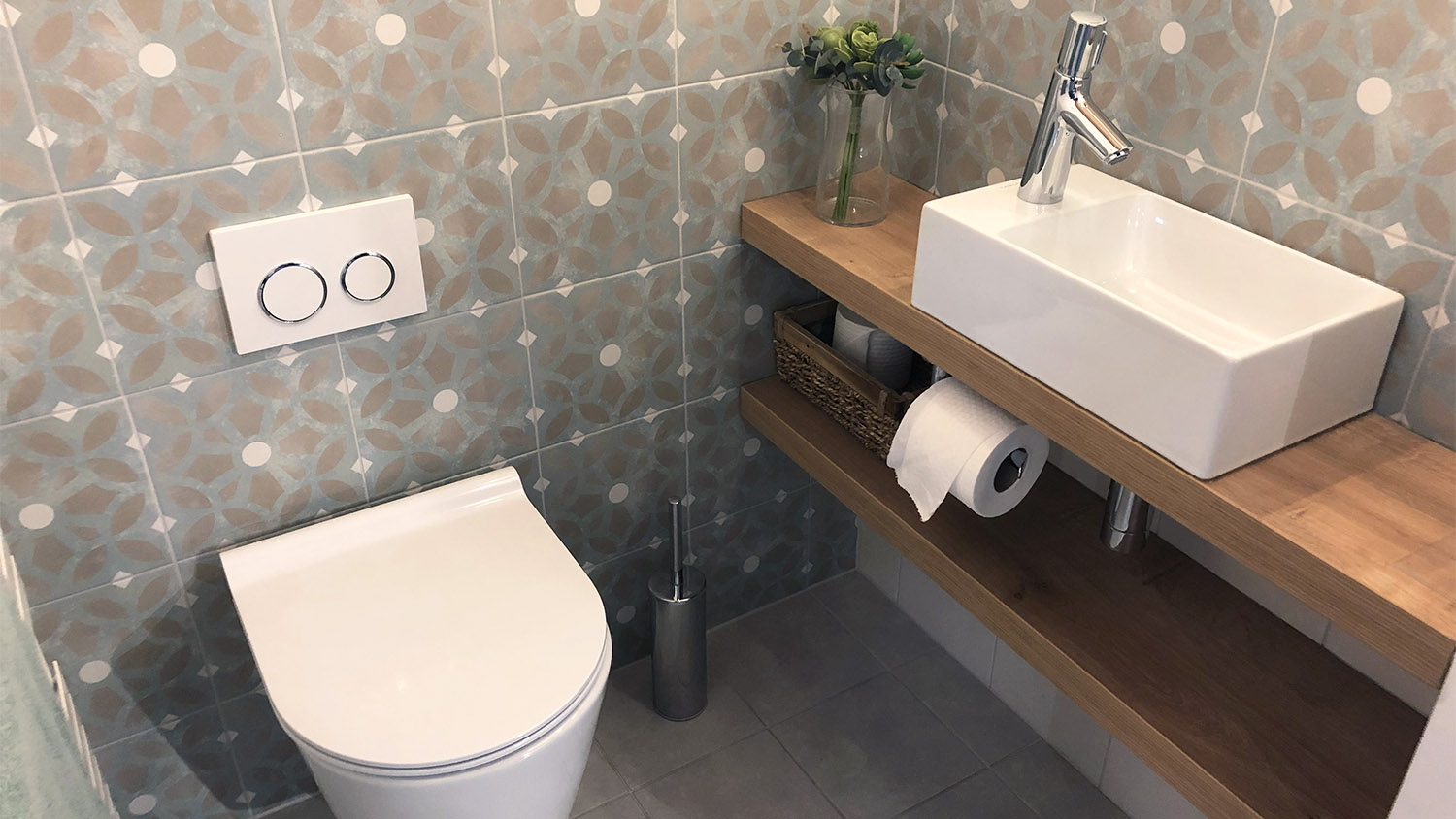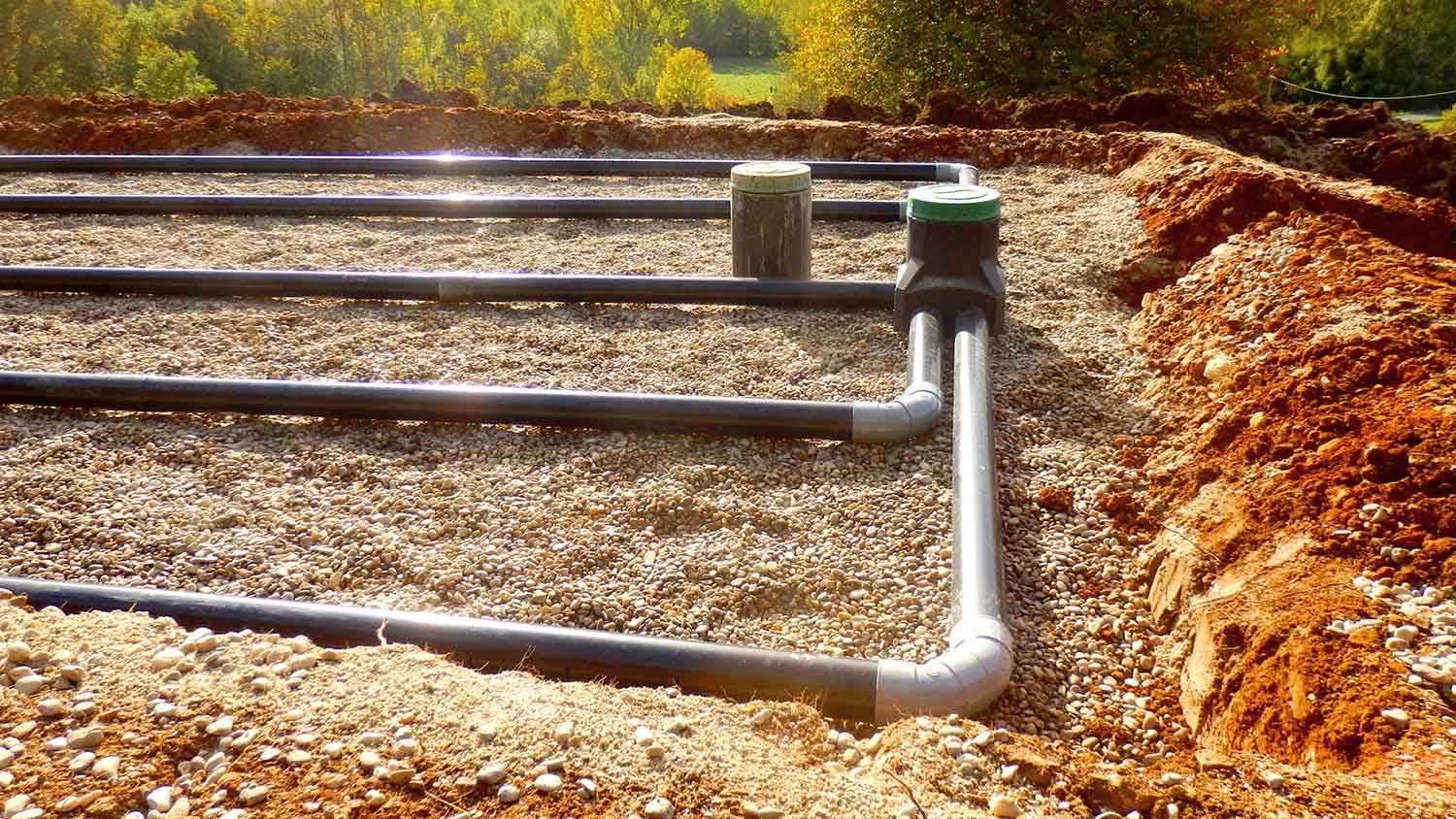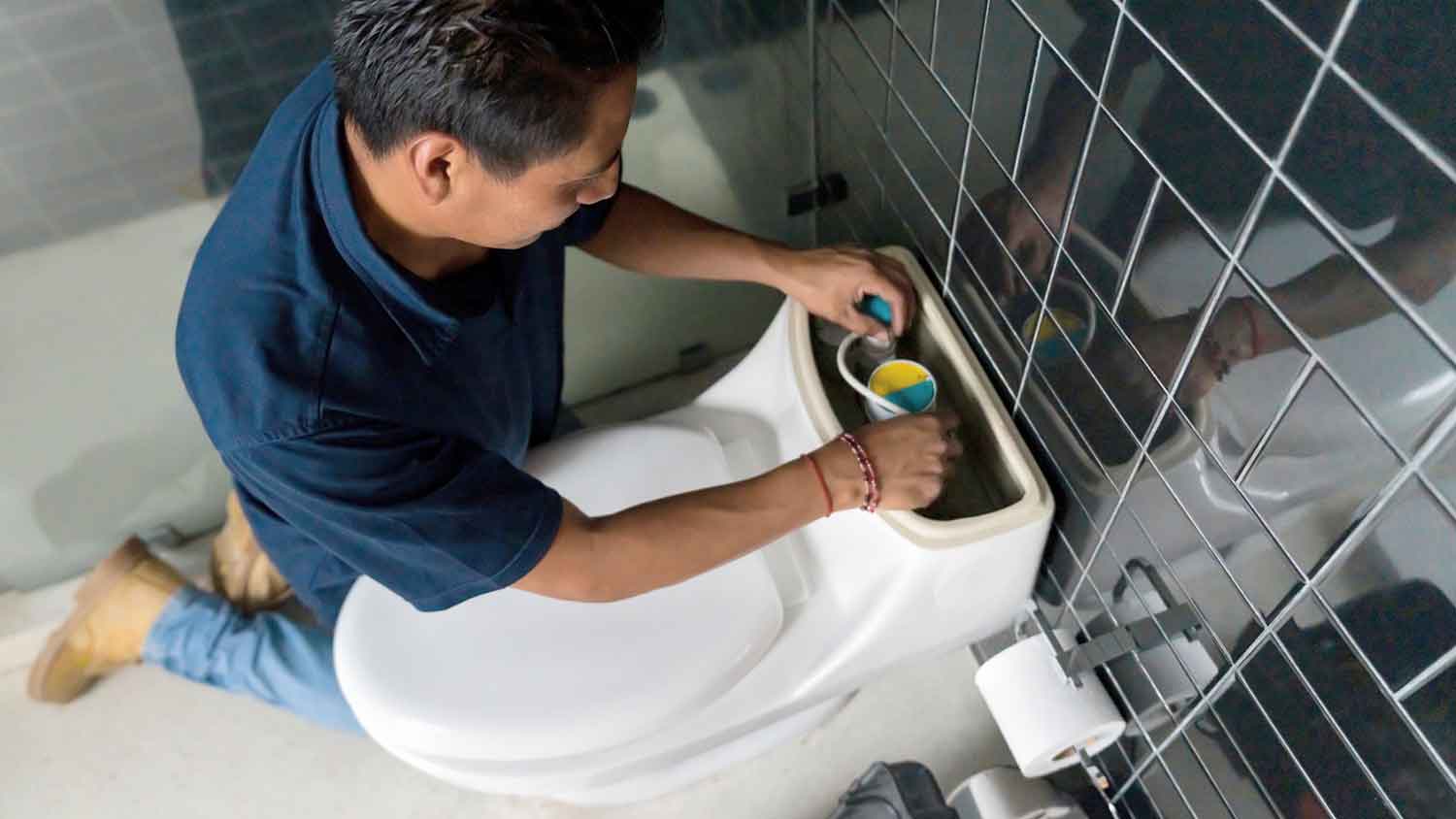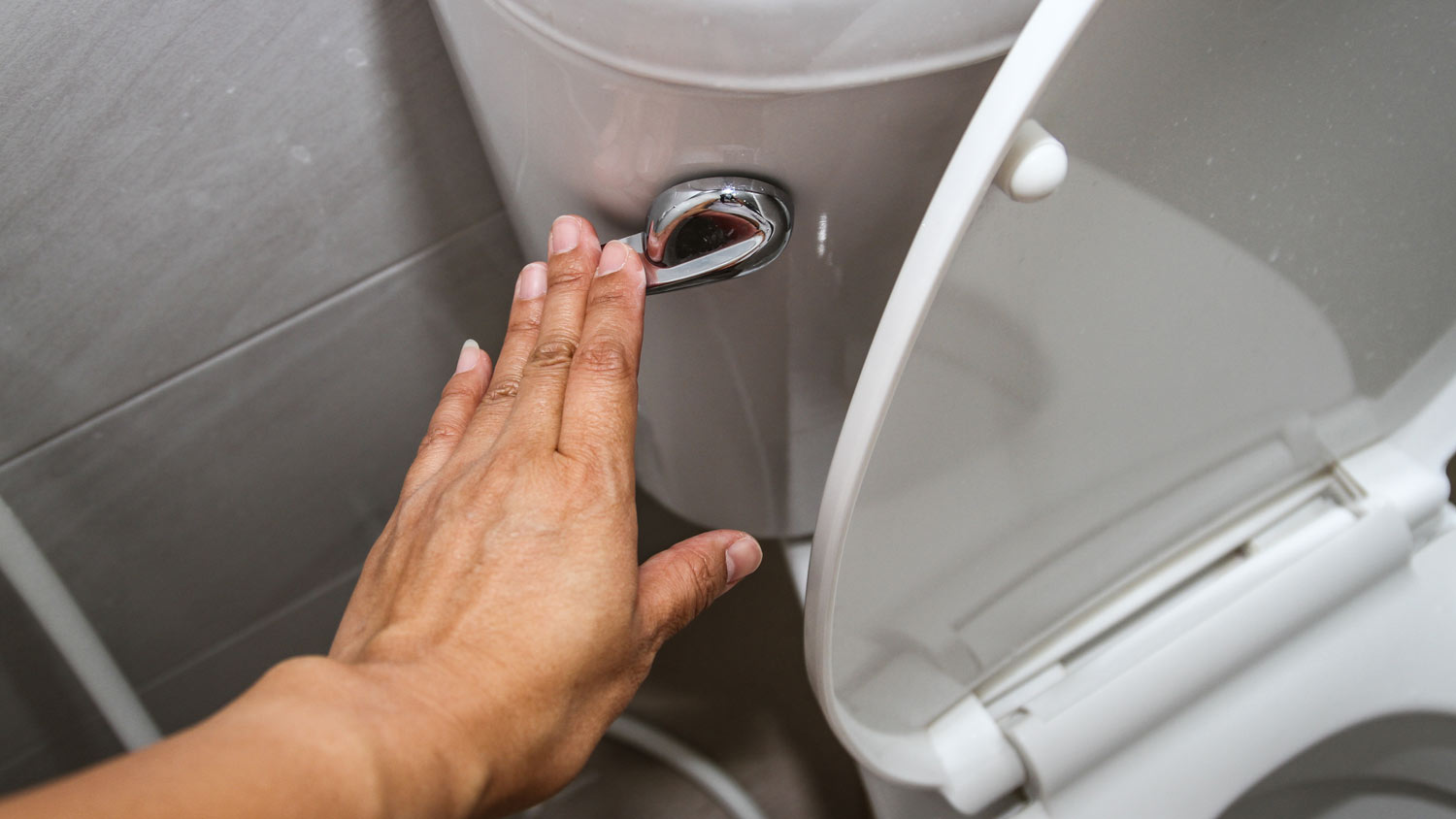
Need to know what sewer line replacement costs in Seattle, WA? This guide will help you prepare to budget for sewer line replacement done by local contractors.
Get to the bottom of your too-full septic tank issue


When working normally, septic tanks collect and dispose of your home’s waste.
If your tank is full, your drains might slow down and back up.
Septic tanks need to be pumped every few years to get rid of built-up sludge.
Drain field issues and clogged pipes can fill up your tank again after a pump.
Using too much water could also increase your tank’s liquid level.
Normally, emptying your septic tank every few years is enough to keep sludge from building up and backing up your septic system. But what happens if you just had your septic tank pumped, and it’s full again? In that case, there could be a few issues at play—and the solution depends on the specific cause. Keep reading to learn more about what might be going on and how to fix it.
A septic tank is the central component of a septic system, which removes waste from your home if you don’t have access to the public sewage system. The tank collects any water and human waste that goes down the toilets, drains, washing machines, and other plumbing fixtures in your home.
Inside the septic tank, bacteria consume the solid waste. Meanwhile, the liquid wastewater exits your tank through underground pipes and seeps into the surrounding soil in an area known as the drain field.
To keep your septic tank working correctly, you should have it pumped by a septic pro every three to five years. On average, septic tank pumping costs around $400. You may need to empty your tank more often if it’s on the smaller side or if you have lots of people living in your house.
There are a few reasons why your septic tank might seem like it’s full again—even if you pumped it recently. However, since septic tanks typically only need to be emptied every few years, your “full septic tank” might actually signal a different problem with your septic system. Here are a few potential causes.

In a septic system, the drain field (also known as a leach field) plays a vital role: carrying wastewater out of your system and transferring it into the soil underground. By design, your drain field should absorb the wastewater—but in some cases (like if you’ve just had heavy rainfall), it can’t. In those situations, your drain field might be too wet to soak up any more liquid, so the wastewater will go back into your septic tank and fill it up again.
If you suspect that there’s a problem with your drain field, it’s best to contact a pro. Drain field issues can be minor or major, but all of them require specialized experience to fix. Typically, drain field repairs cost between $2,000 and $15,000.
Pipes run to and from your septic tank, transporting waste in and out of your septic system. If one (or more) of these pipes get clogged, waste could build up in your tank instead of going into your drain field. If this is the case, you might notice your drains backing up, making gurgling sounds, or slowing down.
While you can try to clear a main sewer line clog yourself, it often isn’t worth the hassle. Your best bet is to reach out to an expert who can pinpoint the exact problem and resolve it quickly.

Your septic system doesn’t immediately empty itself; it needs time to collect the wastewater from your home and redistribute it into the earth. If you’re using a lot of water in a short period of time, your septic tank might not be able to keep up. As a result, the liquid level can rise inside the tank.
If your water consumption is filling up your septic tank, cut down on your usage and see if that helps. You’ll also want to check your toilets and faucets for leaks. If there’s still an issue, contact a plumber or septic pro.
Septic tanks are durable, with many lasting up to 30 years. However, in order to extend the lifespan of your tank, you need to maintain it properly. Here are some tips for taking care of your septic tank.
Schedule professional pumping and maintenance. In addition to getting your tank pumped, it’s also important to book a professional septic tank inspection every two to five years.
Be mindful about what you put in it. Flushing anything other than septic-safe toilet paper and human waste is a big no-no. Never dispose of paper towels, diapers, baby wipes, or other bulky items in your toilet. Similarly, avoid putting harsh chemicals (like paint thinners and bleach) down your drains.
Keep your drain field clear. Don’t park any cars or leave any lawn equipment on top of your drain field; otherwise, the weight and pressure could damage your septic system.
If you’ve just had your septic tank pumped and it’s full again, it’s a sign that something isn’t quite right with your septic system. Because of this, it’s best to hire a local septic tank repair company to take a look at it—rather than trying to troubleshoot it yourself.
It could either be a quick fix or a major overhaul, depending on the problem. Septic tank repairs generally range from $630 to $2,970, while a replacement septic system costs between $3,460 and $11,360.
Jacob was very informational. He really told something that we did not know about our tank. He was very thoughtful. We will be using him again
It did not go well they damaged my fence they do not speak English so was hard to communicate told me they would fix the damage. But I don t know how when they are not fence people when I called and complained to Angie list they told me if I did not like the service and wanted them to leave I...
They were fantastic they worked extremely hard and cleaned up everything so nicely.
Really liked j and s. They did a lot of irrigation work and were great. Mine have been tore up from a new septic system and just being old 1984. Got it working and replaced the broken septic ones. Great prices and great people.
Keith is a very nice person and him and his crew were very professional and efficient
Very professional,kind,and has knowledge of their work and Answered questions that were asked about the septic tank. I learned a lot. Thank you for your help. Your the best.
It went great. I was quoted a price on the phone of $230 to have the septic tank pumped. This is all new to me and told him so, we've been in the house 2 months and have zero knowledge of what type of tank we have or where the opening is but were told by our realtor to have this done soon...
We were having a family get together on Saturday and all the family was coming to the house. The septic tank backed up and we freaked out. I called Cliff's because they had done work for me before. They were here within a couple hours and took care of the problem.
My experience went well. The staff was professional and knowledgeable in their field. The pricing was reasonable and I would recommend this company to others.
Excellent! We are sleeping much better and can watch T.V., read and sleep without waking up with bad backs. The Price was the best, over $1,000 less than the competition. Quality is excellent!
From average costs to expert advice, get all the answers you need to get your job done.

Need to know what sewer line replacement costs in Seattle, WA? This guide will help you prepare to budget for sewer line replacement done by local contractors.

Need to know what sewer line replacement costs in Kansas City, MO? This guide will help you prepare to budget for sewer line replacement done by local contractors.

Need to know what sewer line replacement costs in Charlotte, NC? This guide will help you prepare to budget for sewer line replacement done by local contractors.

A clogged septic tank can wreak havoc on your home and property. Learn how to unclog a septic tank yourself and know when to call in the pros.

How deep is a septic tank, and why is it buried? Learn where to place your own septic system as well as how to maintain it and how much it costs.

A saturated leach field can lead to costly damage to your plumbing and yard. Learn how to fix a saturated leach field with this guide.